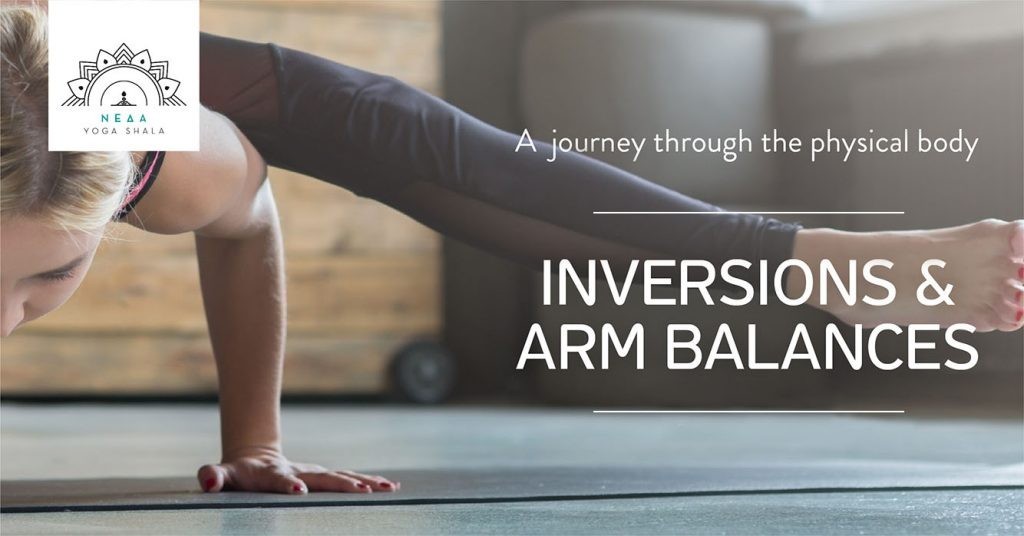
Inversions & Arm Balances
With the term “inversions” we refer to all the poses where the head is below the heart. For example, headstands, handstands or shoulder stands, downward facing dog, standing forward bends, bridge etc. Many inversions are often combined with handstands, and for that reason, we will examine them together.
These poses offer many important benefits. The positioning of the body “against gravity” allows the heart to rest and increases the blood and oxygen flow to the brain, enhancing alertness and improving concentration, memory, perception etc. The increased blood flow boosts endorphin production, bringing a feeling of joy and well-being. Many poses also help improve the lymph circulation, as well as strengthen the torso and limbs. They also deeply affect the nervous system. Some of them calm it down, bringing a sensation of relaxation and balance (e.g. a shoulder stand or a standing forward bend), and others (e.g. a handstand) act on the sympathetic nervous system, causing activation and alertness. Depending on our needs, the correct selection of inversions can be very beneficial.
But, the most important thing that makes inversions special might be the following: Yoga inspires and teaches us to expand and transcend the deeply rooted beliefs, impressions and mental patterns that we carry. But this reprogramming of the brain through the poses does not occur when we simply perform the poses, but when we start feeling comfortable in them; when they start becoming familiar, as if they are our natural state. Swami Vivekananda used to say that every new thought we make “carves” a new pathway in our mind. This explains conservatism or narrow minded perception in human nature, which likes to move inside the existing mental “pathways”, because it feels more comfortable there. The brain “is uneasy” and refuses the influence of new ideas. So, same as it happens with all new things, let alone with an inversion or a handstand, the mind resists and fights. The more we practice these poses gently and with duration, the more we carve deeper “pathways”, the more familiar they become and the less we resist. In that way, the mind overcomes the initial denial and fear and it becomes capable of feeling comfortable, calm and focused even under those circumstances. It becomes adaptable and trained to maintain calmness, in a situation outside its apparent comfort zone. In that way, it transforms into a mind equipped to face any kind of circumstances (traffic noise, inverted headstand, work pressure, fear, and intensity of an argument…) with composure and receptiveness. If this whole process takes place with awareness and observation, practicing inversions becomes a beautiful yogic practice.
Many inversions or handstands require discipline, patience and persistence. Some need us to fall and find the strength to get up again. They remind us to be humble and remember that the greatest realizations do not come when we “conquer” a pose, but on our adventurous way towards it.
…Keep Ithaka always in your mind.
Arriving there is what you are destined for.
But do not hurry the journey at all.
Better if it lasts for years,
so you are old by the time you reach the island,
wealthy with all you have gained on the way,
not expecting Ithaka to make you rich.Ithaka gave you the marvelous journey.
Without her you would not have set out.
She has nothing left to give you now.And if you find her poor, Ithaka won’t have fooled you.
Wise as you will have become, so full of experience,
you will have understood by then what these Ithakas mean.Translated by Edmund Keeley/Philip Sherrard
(C.P. Cavafy, Collected Poems. Translated by Edmund Keeley and Philip Sherrard. Edited by George Savidis. Revised Edition. Princeton University Press, 1992)